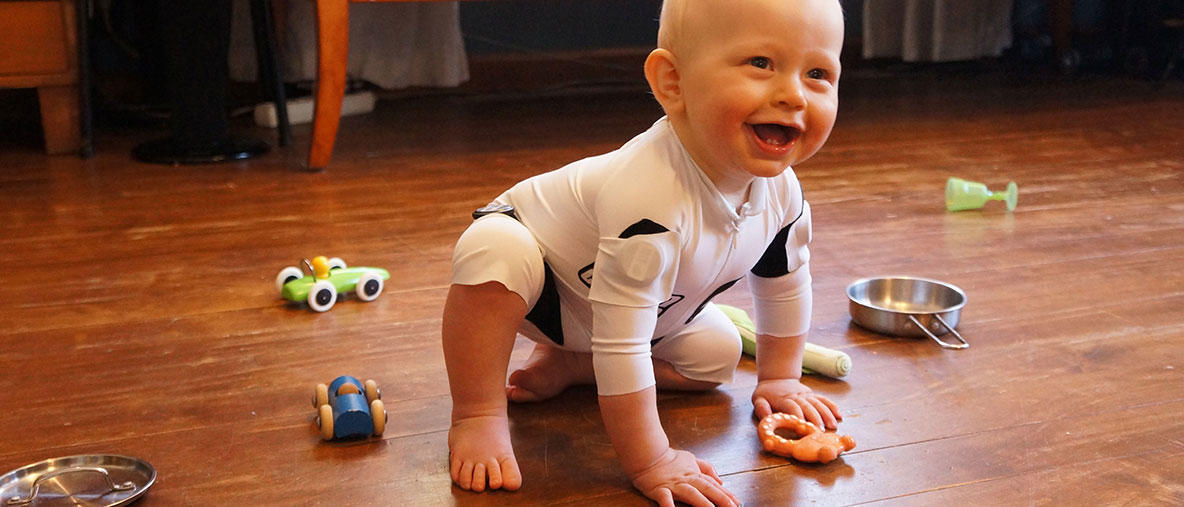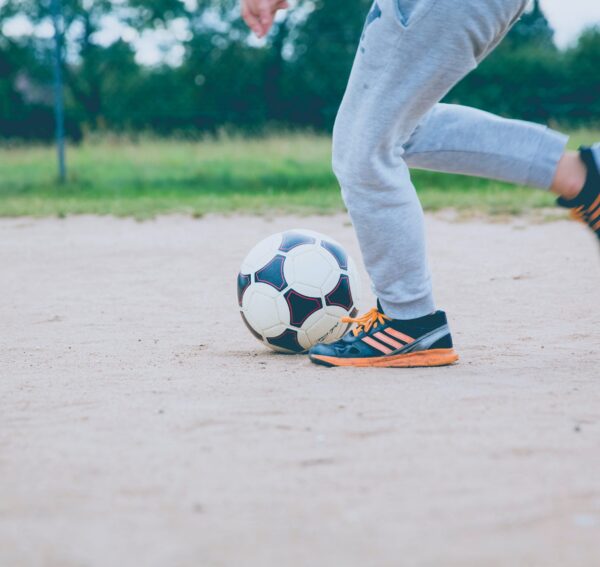Innovative smartsuit allows assessment of children’s movement

Researchers are now able to quantitatively assess children’s spontaneous movement in the natural environment for the first time thanks to the development of a garment that accurately measures the spontaneous and voluntary movement of infants from the age of five months.
The smart jumpsuit was developed by researchers at the University of Helsinki, and is designed to support allied health professionals, and others interested in the development of children to aid in assessing abnormal neurological development, among other things.
The assessment of spontaneous and voluntary movements is part of the neurological examination of infants. Previously, the quantitative tracking of children’s spontaneous motility in the natural environment has not been possible. Instead, children have been primarily qualitatively assessed at the physician’s or physiotherapist’s practice, which requires taking into account the fact that the infant’s behaviour in the practice setting does not necessarily entirely match that seen at home.
The jumpsuit, Professor Sampsa Vanhatalo explained, “provides the first opportunity to quantify infants’ spontaneous and voluntary movements outside the laboratory. The child can be sent back home with the suit for the rest of the day. The next day, it will be returned to the hospital where the results will then be processed.”
The new analysis, he added, is as reliable as human measures, if not more so, with actual movements and physical positions known to the second, after which computational measures can be applied to the data.
“This is a revolutionary step forward. The measurements provide a tool to detect the precise variation in motility from the age of five months, something which medical smart clothes have not been able to do until now.”
Data gleaned by the smart jumpsuit is valuable, since the detection of abnormalities in the neurological development of infants at an early stage enables early intervention and support. Brain plasticity is at its strongest in early childhood, and is benefited by measures supporting development, which are targeted at recurring everyday activities.
Fellow researcher, Professor Leena Haataja, said that developmental disorders pose a “considerable risk” that can lead to learning difficulties and obstacles in the competition for education and jobs. Furthermore, they are a risk factor associated with exclusion from contemporary society.
In the future, the smart jumpsuit could be used for the objective measurement of how various therapies and treatments affect children’s development, something Professor Vanhatalo said is the “million-dollar question in Western healthcare”.
The smart jumpsuit was developed under the Rhythms in Infant Brain (RIB) project, part of the Health from Science (TERVA) programme funded by the Academy of Finland, the Foundation for Pediatric Research and the Finnish Brain Foundation. The multidisciplinary research group, which operates in the New Children’s Hospital, is headed by neurophysiologist Sampsa Vanhatalo and paediatric neurologist Leena Haataja. In addition to physicians, the group comprises psychologists, physiotherapists, nurses and engineers.
The textile and usability design of the smart jumpsuit was coordinated by researcher Elina Ilén, while researchers Manu Airaksinen and Okko Räsänen from Aalto University were in charge of AI analyses. The project utilised the Movesense sensor, an open-source device developed in Finland by Suunto, and a mobile application developed by the German company Kaasa.
Popular

Quality
Practice
Provider
Research
Workforce
Honouring the quiet magic of early childhood
2025-07-11 09:15:00
by Fiona Alston

Policy
Practice
Provider
Quality
Workforce
Minister Jess Walsh signals urgent action on safety and oversight in early learning
2025-07-11 08:45:01
by Fiona Alston

Workforce
Policy
Quality
Practice
Provider
Research
The silent oath: Why child protection is personal for every educator
2025-07-17 09:00:31
by Fiona Alston











